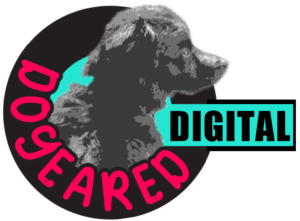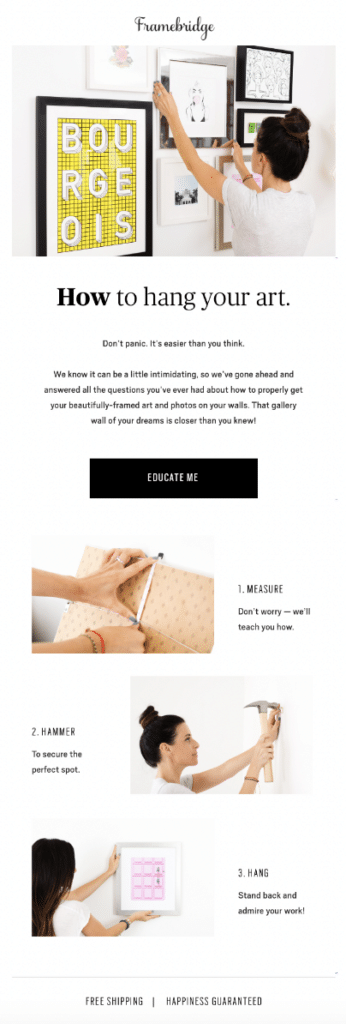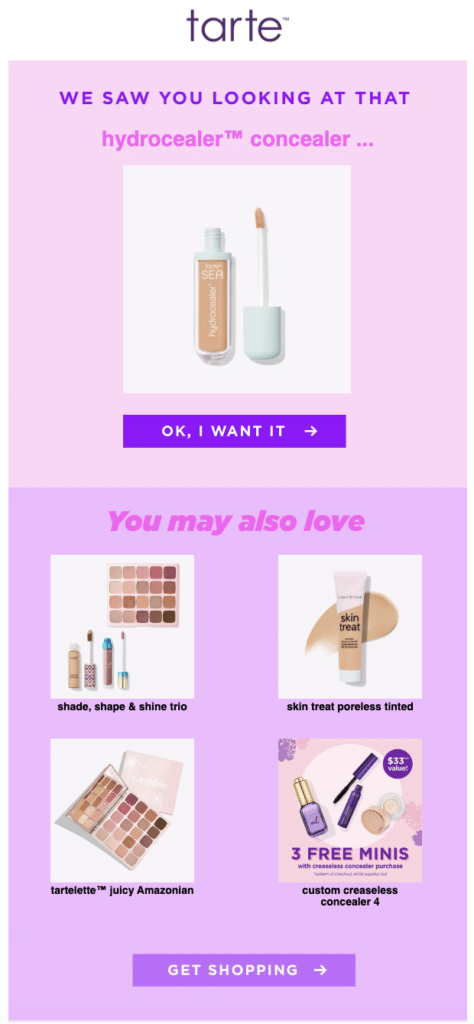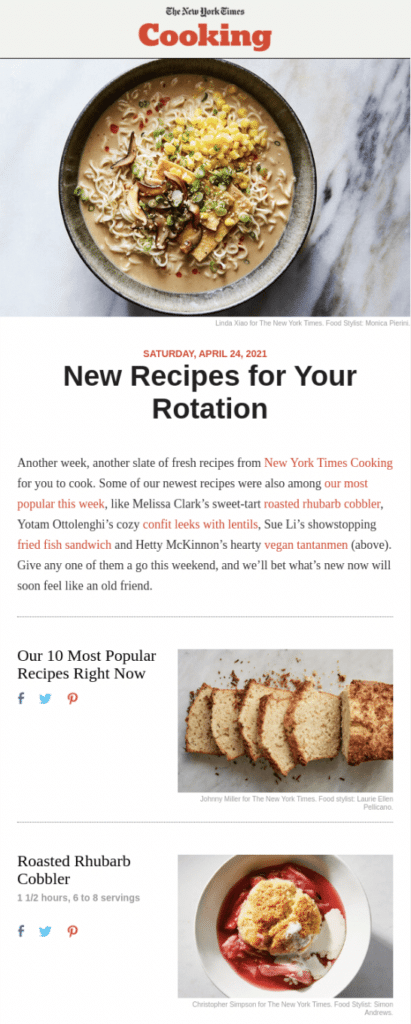Email marketing remains a powerful tool in a marketer’s arsenal, yielding an impressive average return of $36 for every $1 spent. Its effectiveness extends beyond sheer ROI, offering a versatile platform to reach and engage audiences meaningfully. From targeted campaigns to personalized newsletters, email marketing adapts to a range of strategies, solidifying its role as a preferred channel for communication and relationship building. This guide delves into the four key types of email marketing, exploring their unique benefits and applications.
1. Email Campaigns: Your Strategic Broadcasting Tool
What are they? Email campaigns are structured series of emails sent to a broad audience, aimed at promoting products, services, or events. They are the digital equivalent of a marketing blitz, designed to capture attention and invoke action. All the “50% off Black Friday” promo emails that showed up in your inbox last week are great examples of this.
Benefits:
- Wide Reach: Target large segments of your audience simultaneously.
- Cost-Effective: Economical way to convey your message on a large scale.
- Measurable Results: Easily trackable through open rates, click-through rates, and conversions.
When to Use: Ideal for product launches, promotional offers, or major company announcements. Email campaigns work best when you have a clear, compelling message that needs to resonate across a broad audience.
Example: Everlane’s Timely Offer
Everlane, a clothing retailer, leveraged the power of email campaigns with a promotion for free 2-day shipping, ensuring gifts would arrive in time for Mother’s Day. The campaign, showcased in their Free 2-Day Shipping for Mom email, featured sentimental photos of mothers and their children, tapping into the emotional aspect of the holiday to drive urgency and sales.
2. Nurture (Drip) Emails: Cultivating Customer Relationships
What are they? Nurture emails, often called drip campaigns, are a series of pre-written emails automatically sent to guide prospects through a journey. Nurture emails don’t always appear outwardly sales-y. Rather, they’ll often offer useful information, like white papers or instructional guides, to increase brand recognition and build a bond with the recipient before making the pitch. Think of this like planting seeds and carefully nurturing them to grow.
Benefits:
- Builds Relationships: Establishes a connection with your audience over time.
- Educational: Provides valuable information, building trust and authority.
- Targeted Content: Tailored to the specific interests or needs of the recipient.
When to Use: Use when you want to gradually warm up leads, provide educational content, or keep your brand top-of-mind. They’re perfect for guiding potential customers from initial interest to a decision point.
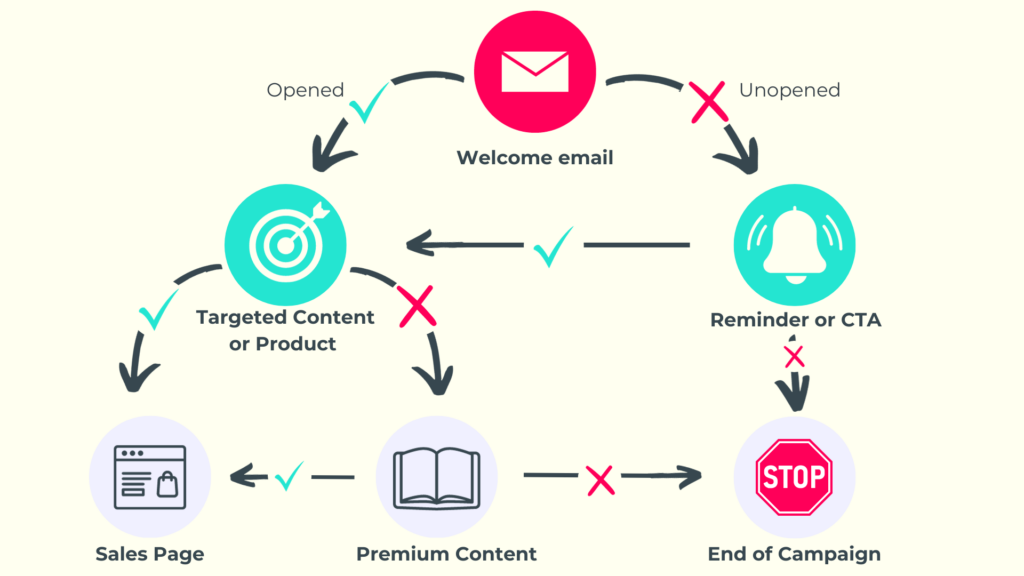
Example: Framebridge’s Educational Approach
Framebridge, an ecommerce framing company, excels in nurturing leads through educational content. Their email campaign Ready, Set, Hang!, teaches recipients how to hang frames properly. This not only builds Framebridge’s credibility but also enhances brand visibility by offering practical, valuable skills to readers. Equipped with the proper knowledge, audiences are more likely to pull the trigger on a purchase.
3. Trigger Emails: The Power of Personalized Automation
What are they? Trigger emails are automated emails initiated by a user’s specific action or behavior, like signing up for a newsletter or abandoning a shopping cart. Trigger emails show up in your customer’s inbox at just the right moment to add context to an action they took.
Benefits:
- Highly Relevant: Sent in response to user actions, making them extremely pertinent.
- Timely: Automated to reach the user at optimal times.
- Increases Engagement: Personalized content boosts user interaction and loyalty.
When to Use: Best for re-engaging customers who have shown interest in your product or service. Use them to nudge users who abandoned their cart, to celebrate milestones (like anniversaries), or to offer personalized recommendations.
Example: Tarte Cosmetics’ Subtle Nudge
Tarte Cosmetics employs a clever nudge tactic in their trigger emails for abandoned carts. Instead of directly urging completion of the order, their email, like this one featuring Hydrocealer Concealer, gently reminds customers of their interest in a product. This approach is low-pressure, giving the decision back to the customer, yet it simplifies the buying process by providing a direct link back to the incomplete order, making it easier and more appealing to finalize the purchase.
4. Newsletters: Regular Updates to Foster Loyalty
What are they? Newsletters are regular emails sent to subscribers, often containing a mix of content such as company news, industry insights, and useful tips. Like drip campaigns, newsletters are great for building brand recognition and credibility over time. And when done right, your audience will eagerly anticipate your weekly or biweekly appearance in their inbox.
Benefits:
- Consistent Engagement: Keeps your audience regularly informed and engaged.
- Builds Community: Creates a sense of belonging among your audience.
- Content Flexibility: Can include a variety of content types to cater to broad interests.
When to Use: Ideal for keeping in touch with your audience, establishing thought leadership, or sharing company and industry updates. Newsletters are a great way to maintain an ongoing conversation with your customer base.
Example: New York Times Cooking’s Visual Feast
The New York Times Cooking newsletter is a stunning example of the impact of visual content. Known for its diverse, multicultural recipes, the newsletter, like this one featuring new recipes, greets readers with enticing, high-quality images of dishes sure to get readers hungry. This visual appeal, combined with engaging, conversational text, has culinary enthusiasts excitedly waiting on the latest edition. Although shorter than typical magazine newsletters, it stands out with its uncluttered design and enriching content, ensuring each reader will find value in every issue.
The Pros, Cons, and Prices of the Most Popular Email Clients
Email campaign platforms are essential tools for managing and optimizing email marketing efforts. They provide easy-to-use interfaces for designing emails, segmenting audiences, and analyzing campaign performance. These platforms help streamline the email marketing process, making it more efficient for businesses of all sizes to connect with their customers and track the success of their efforts. There are tons of options on the market, but we’ll take a look at a few:
| Email Client | Pricing | Pros | Cons |
|---|---|---|---|
| Mailchimp | Free plan available; Paid plans start at $13/month | User-friendly interface; Great for beginners; Comprehensive free plan | Higher-tier plans can be expensive; Limited automation in free plan |
| ActiveCampaign | Plans start at $29/month | Advanced automation features; Excellent customer support; Detailed reporting | Can be complex for beginners; No free plan |
| Constant Contact | Plans start at $12/month | Strong template variety; Great for event-driven emails; Easy to use | Pricing can be high for larger lists; Limited automation capabilities |
| Brevo | Free plan available; Paid plans start at $25/month | Free plan includes unlimited contacts; Good deliverability; SMS marketing feature | Limited features in free plan; No phone support |
| Campaign Monitor | Plans start at $11/month | Beautiful templates; Easy-to-use design tools; Great customer service | Can be expensive for larger subscriber lists; Limited third-party integrations |
Final Thoughts
The versatility and impact of email marketing makes it an unmatched tool for digital communication. Whether through strategic email campaigns, nurturing drip emails, timely trigger emails, or engaging newsletters, businesses can effectively connect with their audience, build lasting relationships, and drive meaningful engagement. By leveraging the unique strengths of each type, and with the support of the right email campaign platforms, companies can craft a holistic email strategy that not only reaches their customers, but leaves a lasting impression that’ll keep them coming back for more.
